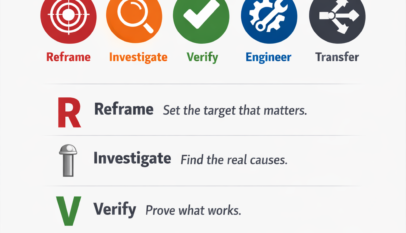The design stage covers the period from receiving budget approval to just before embarking on fabrication.
- Formulate the basic design, based on the equipment specification, and draw up the implementation budget. At this point, an equipment FMEA (see Figure “The Anatomy of an MP Information Utilization System” in lesson 3.5) should be carried out to find out how the system operation, safety, product quality and other parameters would be affected if a failure were to occur in an equipment system, subsystem, or section. Any problems identified should be addressed in the design. Equipment layout considerations should also be thought through in depth at this stage. Typical considerations include the format in which raw materials will arrive; where they are to be stored and by what route they should be conveyed to the production line; how the power and other utilities are to be supplied; and how the finished products are to be packaged, stored and shipped out.
- In the design review carried out after formulating the basic design, check that nothing has been overlooked regarding the equipment’s reliability, maintainability, operability, safety, economy, flexibility and conceptual design requirements. The next step will be to flesh out the basic design.
- Building on the basic design, formulate the detailed design. At this point, an FMEA (see Figure “Typical FMEA (for Components)”) should be carried out on the equipment’s components. Besides improving the reliability of the parts, this process includes examining their factory- friendliness, and making any necessary changes to the detailed design. To ensure that MP information is not overlooked, make full use of available design standards, collections of design expertise, and common specifications. This will help to make the design as precise as possible, and eliminate the individual differences that tend to creep in when many designers are working on a project. This is the stage of the design process at which you will need most outside help from construction companies and other specialist firms. It is important to conduct the design review very thoroughly, based on a relationship of trust between all concerned, and underpinned by the knowledge and experience of all parties.
- In the fourth design review, after the detailed design has been formulated, have the members of staff directly involved – in the maintenance, manufacturing, safety, environment and technology departments – get together and work up the design, making sure that nothing has been overlooked with regard to the basic design requirements concerning reliability, maintainability, operability, safety and other attributes.


















